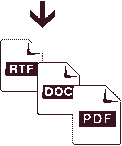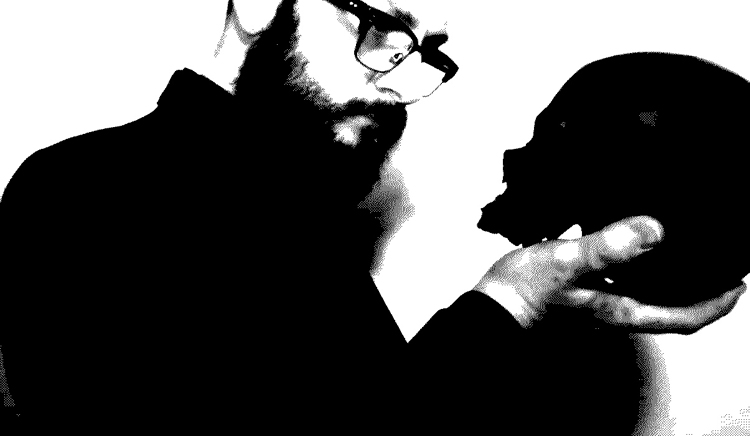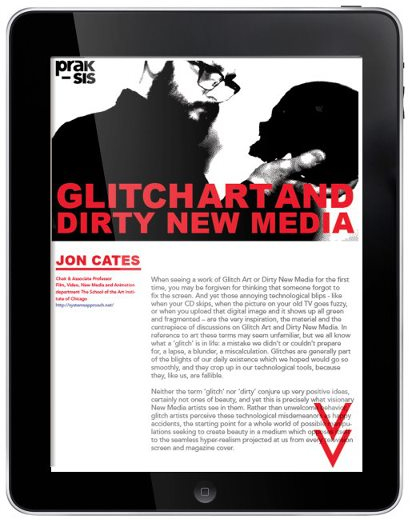


 |


"Glitch Art and Dirty New Media"
When seeing a work of Glitch Art or Dirty New Media for the first time, you may be forgiven for thinking that someone forgot to fix the screen. And yet those annoying technological blips - like when your CD skips, when the picture on your old TV goes fuzzy, or when you upload that digital image and it shows up all green and fragmented – are the very inspiration, the material and the centerpiece of discussions on Glitch Art and Dirty New Media. In reference to art these terms may seem unfamiliar, but we all know what a 'glitch' is in life: a mistake we didn't or couldn't prepare for, a lapse, a blunder, a miscalculation. Glitches are generally part of the blights of our daily existence which we hoped would go so smoothly, and they crop up in our technological tools, because they, like us, are fallible.
Neither the term 'glitch' nor 'dirty' conjure up very positive ideas, certainly not ones of beauty, and yet this is precisely what visionary New Media artists see in them. Rather than unwelcome behavior, glitch artists perceive these technological misdemeanors as happy accidents, the starting point for a whole world of possible manipulations seeking to create beauty in a medium which opposes itself to the seamless hyper-realism projected at us from every television screen and magazine cover.
Glitch Art and Dirty New Media face up to errors, bringing these 'unwanted' elements to the fore. This art form should lead us to question whether this kind of thinking can be applied to other aspects of our society beyond art, in which we so often ignore those who don't fit into our social ideals of perfection and worthiness; or to communication 'errors' between people which we may wish to ignore, but which nevertheless contain their own meaning and importance within our everyday human interactions.
To discuss some of these issues in New Media Art, Axis spoke to jonCates, Chair of the Film, Video, New Media & Animation department at the School of the Art Institute of Chicago. He is currently in preparing for the upcoming Axis International Arts Festival in which he will be exhibiting his installation, "Bring Me the Head of Andrew Eldritch" (2013). jonCates conversed with us about how to approach these new art forms, where they stem from, and why they should resonate in our era. - Una Dimitrijevic for AXIS by Prak-Sis
Una Dimitrijevic: For the members of the public at Axis more accustomed to traditional artforms (painting, sculpture, cinema...), what can you tell us about how to approach new media and glitch art as viewers or spectators?
jonCates: i would say its best to approach with curiosity and openness: be open to surprise; to see errors differently, as moments of possibilty rather than events to be avoided; and to hear noise as a creative act of musical expression. Also, i recommend approahing these cultures as systems: take a sysems approach; connect dots or pixels in your own configurations; and consider yourself a participant-observer who can and will effect the outcomes of these unstable arts.
Una Dimitrijevic: What do glitch art and dirty new media stem from? What movements and experimentations were they inspired by?
jonCates: this is a great question, thanks for the opportunity to address this.
Dirty New Media is an idea i developed in 2005 as a part of a series of festivals i initiated and organized with Jon Satrom, Amanda Gutierrez, Jake Elliott, Jason Soliday, Arcangel Constantini, Juanjose Rivas and many others Dirty New Media artists... This series, called (A) r4WB1t5 micro.fest, was an international decentralized and open platform. Dirty New Media means dirty as in raw, direct, explicit, noisy. Or as i wrote in 2005, it also means dirty in the sense of broken, crashing, messy, desirous, leaky and open. My naming of Dirty New Media is also meant to imply the existence of a counter-example, i.e. to suggest that a category of "clean New Media Art" might exist that Dirty New Media Art could be an alternative to or in contrast with.
Dirty New Media is a culture of what is now often known as Glitch Art. The terms Glitch Art and Dirty New Media are now often used in relation to one another and even used interchangeably to refer to the same art projects or similar theory-practices.
i speak and write on the precedents for these theory-practices as well as the directions these arts are moving in my GL1TCH.US project, an unstable book for an unstable art. Other artists, curators and authors have also made Media Art histories links in their work. Most recently, the Glitch Art Genealogies exhibition in Berlin included my work on post-glitch as well as work from the Phil Morton Archive that i founded. The work from the Phil Morton Archive included in Glitch Art Genealogies was General Motors, Phil Morton's most well known collaborative project from 1976. i archive Morton's work and have been responsible for making his work freely and openly available online for the 1rst time. Jake Elliott, Erica Peplin, Nick Briz, Rosa Menkman, Nicholas O'Brien, Jason Scott and Joel Kuennen have all also interpreted Dirty New Media and consequently Glitch Art as being connected to the early Video Art moment (i.e. via Phil Morton's collaborative work) and current New Media Art theory-practices in Chicago. Making these connections is a specific contribution of mine to the discourses of these emerging fields.
Many other connections can be traced through Electronic and Experimental musics. as i wrote for the GLI.TC/H international conference's publication on Glitch Art in 2011, these connections come from academic perspectives as well as from pop-cultural forms. From the early 1900's to today, Luigi Russolo's Futurist manifesto, L'Arte dei Rumori (The Art of Noises) is a well known early example. The music of Kraftwerk in Electronic, Throbbing Gristle and Psychic TV in Industrial, and entire genres such as EBM (Electronic Body Music), IDM (Intelligent Dance Music), Rhythmic Noise, Digital Hardcore, Dubstep and now post-dubstep as well as microsound, Clicks & Cuts, post-techno and Glitch Hop are all also ways to understand when and where cultures of Glitch Art develop from and feedback into. A relationship to punk, as a culture and a form of music now filtered through digital technologies, is also, for me, a very important touchstone for my motivations, interests and inspirations.
Una Dimitrijevic: Which painter in history would you yourself compare your work to? Why?
jonCates: When i visit Painting, i visit as a guest in the house of Painting. i live inside and with Media Art Histories, experimental New Media Art, Noise musics, etc... As a result, i find myself making connections (more than comparisons) to those from these fields and areas of artistic activity.
Una Dimitrijevic: Jackson Pollock is popularly quoted as saying: "the modern painter cannot express this age, the airplane, the atom bomb, the radio, in the old form of the Renaissance, each age finds its own technique." Do you think that media art (glitch art/dirty new media) is the technique which best represents our technological and internet age?
jonCates: Yes, i have similarly expressed positions that could be understood as restatements of Pollock's point. Mayhaps this is a Glitch Era in which we experience a specific kind of breakage based on the broken promises of the Modern Era. An American Modernist promise of endless utopic improvements to life based on technologies, leading each generation beyond the apex of the last, into better and brighter tomorrows now appears clearly hollow and false. We humans live in a broken world, a technologized world of our own making. The technological is a socially constructed set of ideas and realizations of material power that shift and shape over times and fundamentally inform and affect our understandings of ourselves, glitches, nature, the natural world, the technological worl, specific Digital Art technologies and our Arts in Technological Times.
Una Dimitrijevic: Who are the designated audiences of dirty new media/glitch art? Who are its buyers and its critics? Or is the whole point to question these very identities?
jonCates: i would not want to suggest that there are limits to who could become excited by and involved in these forms. Inclusivity is an important feature of these communities.
Una Dimitrijevic: In what way does your art form put a new perspective on the idea of art as a commodity?
jonCates: That is a very complex question, but put simply, my own art projects exist primarily outside of art-market based commodity exchanges. Still, i do have projects or works of art that do circulate as commodities. These categories are not mutually exclusive but operating in and out of them both raises ethical issues and concerns. i attempt to address these ethics directly and explicitly in the projects themselves.
Una Dimitrijevic: The art world, dominated by galleries and auction houses, is perceived as more and more exclusive and elitist – does media art look to counter or question this reality?
jonCates: The opposite could also be easily stated, i.e. that online venues and forms of digital distribution enable art worlds to be more and more inclusive. An important point for me in this question is that my answer also articulates that there is never only 1 'art world'. There are always many Art Worlds that co-exist in multiple realities, more or less connected to or even aware of each other.
Una Dimitrijevic: People buy art and pay a lot to see it in museums because they perceive the work in their possession or on display to be unique, and a lot of its worth is invested in this 'uniqueness'. Media art seems to violently oppose this idea, insisting on the notion of 'copying it right' and encouraging widespread multiplication and desacralisation of the work. In this context, do you think that the work produced by media artists, such as the work to be shown at Axis, can still be considered an 'original artwork' or is its worth altered by its multiplication like a poster reproduction?
jonCates: The question of originality is another complex set of issues and ideas. My answer would involve questioning the existence of any form of pure or objective artistic 'originality' as a standard by which to measure ourselves or our cultures. i would argue for a range of positions that recognize that now, as well as before in various antiquities, ecstasies of influence are deeply foundational to the making of any culture or any art. You refer to the economic expense of art as a factor but alternative approaches and histories exist. You also reference COPY-IT-RIGHT, the ethical engagement for experimental Media Art developed by Phil Morton. As scholars such as Janice T Pilch and Debora Jean Halbert explain, currently commodities and their exchanges are increasingly digital, corporatized and policed by restrictive intellectual property regimes. These regimes are most often associated with efforts to prevent piracy in terms of file sharing and copying of digital files. As Nick Briz states: all digital files are copies. Copying is so deeply fundamental to digital technologies and authorship, that "copy" is not the most accurate term. The term "instantiation" more accurately reflects that all digital media is in fact instantiated or even versioned as instances or versions of itself over and over again in various time-spaces. Digital sharing and distribution of media arts, from the recent pasts until now, offers important possibilities to artists. My Media Art Histories research into these possibilities is published online and in forthcoming publications from MIT Press and Intellect Books. i also present in the international Media Art Histories conference series and speak as an invited guest, addressing the importance of openness in Media Art Histories as a field and archiving and preservation as related efforts. My work in this area is easily accessible online, however, to answer your question directly: yes, my work is as original as any other artists work.
Una Dimitrijevic: Glitch art seems to be a fusion of both accident and manipulation, does one necessarily lead to or stem from the other, or are there 'pure' works of glitch where the uncontrolled and accidental facets dominate, and others which are predetermined manipulations of technological snippets?
jonCates: In the discourse of the community we refer to different kinds of glitches such as feral or domesticated. The feral glitches are those that we all encounter in the wild, during our daily lives. A broken public display that presents scrambled characters rather than readable messages due to mechanical malfunctioning is an example of a feral glitch in the wild. If captured by an artist and domesticated or tamed into a work of art, then this becomes another form of glitch, a glitch which is controlled to some extent. Other times and approaches involve the creation of circumstances that will become surprising or unpredictable in their glitched outcomes. A fairly in depth discussion of these differences occurred online in 2011 in a conversation called "Glitched, Cracked, and Dirty Media" moderated by Patrick Lichty on Empyre. This conversation continues among those making these unstable arts and writing on these theory-practices. The edges of these differences can and do of course blur, leak and overlap while artists simultaneously flow between these approaches.
Una Dimitrijevic: Glitches are undesirable elements for which countless error checking protocols exist with the sole purpose of eliminating them. Yet Glitch Art brings these very 'unwanted' elements to the fore. Do you consider one of the aims of this type of art to therefore be to 'beautify mistakes', to make us face up to errors that would normally be ignored, like presenting all the scraps of paper that a collage artist might throw in the bin and exhibiting them as worthwhile pieces in their own right? Do you think this kind of thinking should be extended to considerations about other aspects of our society beyond art, in which we ignore those who don't fin into our social ideals of perfection and worthiness? Or communication 'errors' between people which we may wish to ignore, but which nevertheless contain their own meaning and importance within our everyday human interactions?
jonCates: Yes, as you say, facing up to errors is very important and errors are not only found in art but rather in all aspects of our lives.